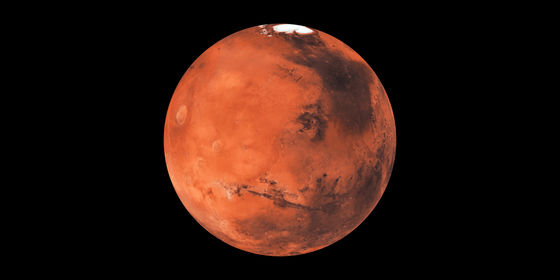Research reveals that there may be a 'sanctuary' on Mars where life survives

Previous research has
Potential for photosynthesis on Mars within snow and ice | Communications Earth & Environment
https://www.nature.com/articles/s43247-024-01730-y
Astrobiology: Potential microbial habitats in | EurekAlert!
https://www.eurekalert.org/news-releases/1061530
Alien life could lurk beneath Mars' protective ice, study suggests | Space
https://www.space.com/alien-life-mars-ice-photosynthetic-zones
Mars is a planet located in the habitable zone like Earth, but billions of years ago, the planet's magnetic field was lost and the solar wind blew away most of its atmosphere.
As a result of the thinning of the atmosphere, Mars is bathed in deadly amounts of ultraviolet radiation, making it nearly impossible for life to survive on its surface. 'Unlike Earth, Mars doesn't have an ozone layer to protect its surface, so it receives 30 percent more harmful ultraviolet radiation than Earth,' says Aditya Khullar of NASA's Jet Propulsion Laboratory.
'If there is a place on Mars where life could photosynthesize, it would be inside dusty ice,' thought Klar and his team, who used computer simulations to analyze the impurity content and structure of Martian ice.

The simulation showed that Martian ice containing impurities such as dust melts from the inside, preventing liquid water from evaporating while protecting the interior from deadly ultraviolet rays. According to the research team, if there are a lot of impurities in the ice, too much sunlight is blocked, but the habitable zone can form at a depth of 5 to 38 cm in ice containing 0.01 to 0.1% dust, and at a depth of 2.15 to 3.10 meters in purer ice.
'The dusty ice at mid-latitudes on Mars could potentially contain the two main ingredients needed for photosynthesis: enough sunlight and liquid water,' Klar explained. 'Two independent simulations of dense snow on Mars show that melting of ice beneath the surface at mid-latitudes is possible if the snow contains even a small amount of dust -- less than 1 percent.'
The theory that life exists under ice is supported to some extent by phenomena observed on Earth. For example, in glaciers in Alaska and elsewhere, black particles made of dust and algae absorb sunlight, causing the ice to melt with heat, forming ' cryoconite holes ' where life can thrive. One theory is that these holes provided shelters for life to survive when the Earth was completely frozen over.
Past surveys have also revealed that there are areas on the Martian surface where ice is exposed.
A place where underground ice is exposed on the surface of Mars is found - GIGAZINE

The researchers emphasize that the presence of habitable sites on Mars does not actually prove that extraterrestrial life exists or has existed there in the past, but the discovery of exposed surface ice at mid-latitudes on Mars is important for future searches for life.
'We are currently working with a team of scientists to develop improved simulations of the melting of dusty ice on present-day Mars, and we are also replicating these melting scenarios in the laboratory to investigate them in more detail,' Klahr said.
Related Posts:
in Science, , Posted by log1l_ks







